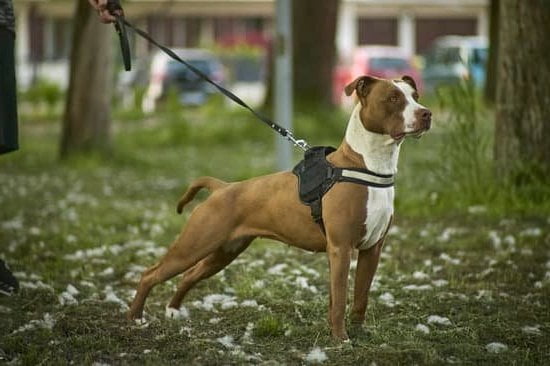Are you wondering how dog training can make a difference in your furry friend’s behavior and overall well-being? Training your dog is not just about teaching them to obey commands; it’s also about fostering better communication, improving behavior, and deepening the bond between you and your pet. In this article, we will delve into the importance of dog training and highlight the myriad benefits of investing time and effort into this essential aspect of pet ownership.
Training your dog goes beyond simply teaching them to sit or stay. It’s about creating a harmonious relationship based on clear communication and mutual understanding. By investing in dog training, you can improve their behavior, enhance the way you interact with them, and build a stronger bond that lasts a lifetime.
In the following sections, we will explore different dog training methods, basic commands every dog should know, strategies for addressing behavioral issues, the importance of socialization, advanced training techniques, tools and equipment for training, and finding a professional trainer. By gaining insight into these areas, you’ll be equipped with the knowledge to provide your beloved canine companion with the best possible training experience.
Different Dog Training Methods
Positive reinforcement, clicker training, and obedience training are just a few of the many methods available for training dogs. Each approach has its own set of benefits and drawbacks, and choosing the right method for your dog is crucial in achieving successful results.
Positive reinforcement focuses on rewarding good behavior with treats or praise, which can be highly effective in creating a positive association with desired actions. This method encourages dogs to repeat behaviors that result in positive outcomes, making it an excellent choice for teaching basic commands and correcting simple behavioral issues. However, some critics argue that relying solely on positive reinforcement may not adequately address more challenging behavioral problems.
Clicker training utilizes a small handheld device that emits a clicking sound to mark desired behavior, followed by a treat or reward. This method is praised for its precision in timing and communication with the dog, making it ideal for shaping specific behaviors or teaching complex tricks. Clicker training also promotes a strong bond between the dog and the trainer through clear communication. On the downside, clicker training requires consistency and patience to achieve lasting results.
Obedience training involves teaching dogs to respond reliably to verbal commands such as sit, stay, come, and heel. This method often incorporates leash corrections and other physical cues to guide the dog’s behavior.
Obedience training is beneficial for establishing clear boundaries and promoting respect between the dog and its owner. However, critics argue that this approach may rely too heavily on punishment-based techniques and could potentially damage the trust between the dog and its trainer if not executed properly.
Basic Commands
When it comes to dog training, teaching your furry friend some basic commands is essential for their safety and your sanity. These foundational commands not only improve communication between you and your dog, but also help to establish a respectful and obedient relationship. Here are the essential commands every dog should know, along with step-by-step instructions on how to teach them:
1. Sit: Teaching your dog to sit is one of the most fundamental commands and is often the first command that puppies learn. Start by holding a treat close to your dog’s nose and then raise your hand above their head, which will cause their bottom to lower. As soon as they sit down, say “sit” and give them the treat.
2. Stay: The stay command is crucial for keeping your dog safe in potentially dangerous situations. Begin by asking your dog to sit, then open your palm toward them while saying “stay” in a firm tone. Step back slowly while maintaining eye contact with your dog. If they stay in place, reward them with a treat.
3. Come: The come command is vital for calling your dog back to you if they stray too far or if they’re off-leash in a safe area. To teach this command, simply crouch down, open your arms, and call “come” in an enthusiastic tone of voice. When they come to you, reward them with praise and a treat.
4. Heel: Teaching your dog to walk nicely on a leash without pulling is important for both their safety and yours. Start by holding their favorite toy or treat at hip level with an outstretched arm – this will encourage them to walk closely alongside you.
By consistently practicing these commands using positive reinforcement techniques, you can effectively teach your dog the basic skills needed for good behavior and obedience. Remember that patience and consistency are key when it comes to training your furry companion.
Behavior Modification
Behavioral issues in dogs can be frustrating for pet owners and can lead to strained relationships between the dog and its human companions. However, through consistent training and positive reinforcement, many of these behavioral problems can be addressed and corrected effectively.
Excessive Barking
One common behavioral issue in dogs is excessive barking. Whether it’s triggered by boredom, anxiety, or territorial instincts, constant barking can be disruptive and annoying. One strategy to address this behavior is to teach the “quiet” command through positive reinforcement. When the dog stops barking on command, they should be rewarded with treats or praise. Additionally, providing mental and physical stimulation through toys, exercise, and interactive play can help reduce the need for excessive barking.
Jumping
Another common problem is jumping up on people, which can be particularly troublesome if the dog is large or excitable. To correct this behavior, it’s essential to redirect the dog’s attention when they are about to jump by giving them a specific command such as “sit” or “down.” Consistently rewarding the dog when they respond appropriately helps reinforce good behavior and discourages jumping.
Leash Pulling
Many dogs also struggle with leash pulling during walks, making the experience stressful for both the dog and the owner. Training techniques such as loose-leash walking and attention redirection can help address this issue. Positive reinforcement methods involve rewarding the dog when they walk calmly beside their owner without pulling on the leash.
By addressing these common behavioral issues through consistent training and positive reinforcement, pet owners can improve their relationship with their furry companions while creating a more harmonious living environment for all members of the household.
Socialization
Socializing your dog is an essential part of their training and development. Proper socialization can have a significant impact on your dog’s behavior, temperament, and overall well-being. Here are some key reasons why socializing your dog is important:
- Builds Confidence: Exposing your dog to different environments, people, and other dogs from a young age can help build their confidence and reduce fear or anxiety in new situations.
- Promotes Good Behavior: Dogs that are well-socialized are less likely to exhibit aggression or fear-based behaviors towards unfamiliar people or animals.
- Enhances Communication Skills: Socializing your dog allows them to learn appropriate ways to interact with other dogs and humans, improving their communication skills.
Now that we understand the importance of socialization for our furry friends, here are some tips for successful socialization training:
- Start Early: Begin socializing your puppy as early as possible, ideally between 3-14 weeks of age when they are most receptive to new experiences.
- Positive Experiences: Ensure that every interaction with other dogs and people is positive and rewarding for your dog. Use treats, toys, and praise to reinforce good behavior.
- Gradual Exposure: Introduce your dog to new environments, sounds, sights, and smells in a gradual and controlled manner to prevent overwhelming them.
Remember that every dog has unique needs and personalities, so be patient and considerate while socializing them. With consistent training and positive experiences, you can help your canine companion become a well-adjusted and friendly member of the community.
Advanced Training
Once your dog has mastered the basic commands and is well-behaved, you may want to consider more advanced training techniques to provide them with mental stimulation and physical exercise. One option is agility training, which involves navigating a course of obstacles such as tunnels, weave poles, and jumps. This not only provides physical exercise but also helps improve your dog’s coordination and confidence.
Scent detection training is another popular advanced training method that taps into your dog’s natural ability to sniff out scents. This type of training can be particularly useful for working dogs who are trained to detect drugs, explosives, or search and rescue missions. It can also be a fun activity for any dog and their owner to participate in together.
Trick training is not only entertaining for both you and your dog but also helps keep their mind sharp. Teaching your dog various tricks such as rolling over, playing dead, or even sorting laundry can provide mental stimulation and strengthen the bond between you and your furry friend. These advanced training techniques offer a great way to continue challenging your dog and strengthening the bond between the two of you.
| Training Technique | Benefits |
|---|---|
| Agility Training | Improves coordination & confidence |
| Scent Detection | Taps into natural ability & stimulates mind |
| Trick Training | Mental stimulation & strengthens bond |
Training Tools and Equipment
Clickers
Clicker training is a popular method used in dog training, particularly for reinforcing positive behavior. The clicker itself is a small plastic device that makes a distinct clicking sound when pressed. This sound serves as a marker to signal to the dog that they have exhibited the desired behavior. When using a clicker, it’s important to pair the click with a treat or reward immediately after, so the dog can associate the sound with something positive.
Treats
Treats are an essential tool for rewarding and motivating dogs during training sessions. It’s recommended to use small, bite-sized treats that are high in value and appealing to your dog. Treats should be given immediately after the dog completes a command correctly, reinforcing the desired behavior. It’s important to keep treats consistent and not over-rely on them, gradually phasing them out as the dog becomes more proficient at obeying commands.
Collars and Leashes
Collars and leashes are crucial tools for controlling and guiding your dog during training exercises. When choosing a collar, consider factors such as size, material, and adjustability for comfort and safety. There are various types of collars available, including flat collars, martingale collars, slip collars, head halters, and harnesses, each serving different purposes depending on your dog’s behavior and training needs.
Training Mats
Training mats or pads can be useful for teaching your dog where to go potty or for practicing basic commands in a designated area. These mats can be helpful in creating boundaries for your dog during training sessions while also providing a comfortable spot for them to go through their exercises. Additionally, mats can help protect your floors from any messes during housebreaking or other training activities.
When using these tools effectively in combination with positive reinforcement techniques and consistent practice, you can see significant improvements in your dog’s behavior and responsiveness to commands. Each of these tools has its purpose and should be used thoughtfully with consideration for your individual dog’s needs and temperament.
Finding a Professional Trainer
Finding a qualified and experienced dog trainer is essential for ensuring that your furry friend receives the best training possible. When looking for a professional trainer, be sure to do thorough research and ask for recommendations from other dog owners. Additionally, it’s important to look for trainers who are certified by reputable organizations such as the Certification Council for Professional Dog Trainers (CCPDT) or the Association of Professional Dog Trainers (APDT).
Enrolling your dog in professional training classes offers numerous benefits. Not only will your dog receive expert instruction from a trained professional, but they will also have the opportunity to socialize with other dogs in a controlled environment. Professional classes also provide accountability and structure, helping to ensure that you stay consistent with training and see long-lasting results.
It’s important to find a trainer whose methods align with your own beliefs and goals for your dog. Some trainers specialize in specific areas, such as obedience training or behavioral modification, so be sure to choose one that can address your dog’s individual needs. By investing in professional training, you are setting your dog up for success and strengthening the bond between you and your furry companion.
| Benefits of Professional Training Classes | How to Find a Qualified Trainer |
|---|---|
| Expert instruction from trained professionals | Ask for recommendations from other dog owners |
| Opportunity for controlled socialization | Look for trainers certified by reputable organizations |
| Accountability and structure | Find a trainer whose methods align with your goals |
Conclusion
In conclusion, investing time and effort into dog training can bring a myriad of benefits for both you and your furry companion. Not only does training improve behavior, it also enhances communication between you and your dog, leading to a stronger bond. Additionally, a well-trained dog is not only a joy to be around, but also easier to handle in various situations, whether at home or out in public.
Whether you choose positive reinforcement, clicker training, or obedience training, the key is consistency and patience. Each method has its own pros and cons, so it’s important to find the approach that works best for you and your dog. Basic commands such as sit, stay, come, and heel are essential for establishing control and safety with your pet. Teaching these commands step-by-step can lead to better obedience and overall behavior from your dog.
Furthermore, addressing common behavioral issues through training can lead to a more peaceful coexistence with your pet. Whether it’s excessive barking, jumping, or leash pulling, there are strategies available for correcting these behaviors through consistent training.
In addition to basic commands and behavioral modification, advanced training techniques like agility training or trick training can provide mental stimulation and physical exercise for your furry companion. Overall, investing in dog training is an investment in the overall well-being of your pet and the harmony of your household.
Frequently Asked Questions
What Are the 5 Golden Rules of Dog Training?
The 5 golden rules of dog training include consistency, patience, positive reinforcement, clear communication, and regular practice. Consistency is important in setting and enforcing rules for your dog. Patience is needed as dogs may take time to learn new behaviors.
Positive reinforcement, such as treats or praise, helps to encourage good behavior. Clear communication involves using simple commands and body language that your dog can understand. Regular practice ensures that the training becomes a routine for your dog.
How Do I Start Training My Dog?
To start training your dog, it’s important to establish yourself as the leader while also building trust and a strong bond with your pet. Begin with basic commands like “sit,” “stay,” and “come” using positive reinforcement techniques.
Create a consistent schedule for training sessions and be patient while your dog learns new behaviors. It’s also important to address any behavioral issues early on and provide plenty of mental stimulation along with physical exercise.
What Is the Most Effective Way to Train a Dog?
The most effective way to train a dog is through positive reinforcement techniques such as treats, praise, and toys. This method focuses on rewarding good behavior rather than punishing bad behavior.
It helps to build a strong bond between you and your dog while encouraging them to repeat desired actions. Consistency in training, clear communication, and understanding your dog’s individual needs are also important aspects of effective training techniques.

Welcome to the blog! I am a professional dog trainer and have been working with dogs for many years. In this blog, I will be discussing various topics related to dog training, including tips, tricks, and advice. I hope you find this information helpful and informative. Thanks for reading!





